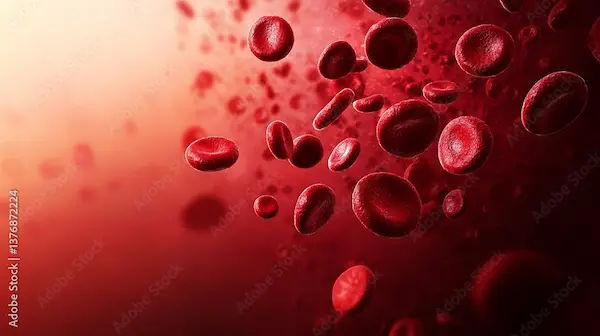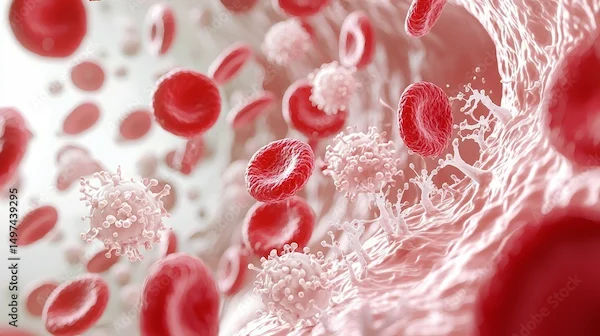Guide to Complete Guide To Dysphoria
Everything you need to know about dysphoria, including types (gender, body), symptoms, causes, and coping strategies. Start your journey to understanding here.

Written by Dr. M L Ezhilarasan
Reviewed by Dr. Mohammed Kamran MBBS, FIDM
Last updated on 30th Oct, 2025

Introduction
Feeling “off” in your body or identity can be hard to describe and even harder to navigate. Dysphoria is a clinical term for a deep, persistent sense of discomfort or distress, and it can show up in different ways, from gender dysphoria to mood-related dysphoria or PMDD. In this complete guide to dysphoria, we’ll explain what dysphoria is (and isn’t), how it can feel day to day, and the most up-to-date options for diagnosis, treatment, and support. You’ll find practical strategies for coping, guidance for families and allies, and clear pointers on when to seek professional help.
Drawing on trusted sources and clinical guidelines, we’ll help you distinguish between gender dysphoria, body dysmorphia, and depression-related dysphoria; understand your choices across psychotherapy, social transition, hormones, and surgery; and build a personalized plan that centers your safety and well-being. Whether you’re exploring your identity, supporting a loved one, or simply looking for answers, this guide aims to be your actionable, compassionate starting point.
What Is Dysphoria? A Plain‑Language Definition
Dysphoria describes a sustained state of unease, distress, or dissatisfaction that feels out of step with how you want to feel in your body, identity, or emotions. It isn’t just a bad day or ordinary stress; dysphoria tends to be persistent and impactful enough to affect sleep, mood, concentration, or daily functioning. Two common contexts are gender dysphoria and mood dysphoria, though people also talk about PMDD (premenstrual dysphoric disorder) and body-related dysphoria.
- Dysphoria vs. distress: Distress is broader and can be about anything (work, finances, illness). Dysphoria is a specific, often identity- or body-related unease that can be difficult to shake.
Dysphoria vs. dysmorphia: Body dysmorphic disorder (BDD) involves being preoccupied with perceived flaws in appearance; gender dysphoria is about incongruence between gender identity and sex assigned at birth. The causes and treatments differ.
Dysphoria vs. euphoria: Many people track gender euphoria moments (times you feel affirmed) as a compass for next steps, not just symptom relief.
Examples:
- A nonbinary person experiences dysphoria when misgendered, which eases when they use correct pronouns and clothing that affirms their identity.
- Someone with depression may describe a pervasive dysphoric mood—restless, irritable, empty—that doesn’t match their life circumstances.
Unique insight: Think of dysphoria as a “signal,” not a verdict. The signal tells you something important needs attention—identity expression, social environment, or health needs. Using a “signal → experiment → reflect” loop helps you test small changes and keep what works.
Consult a Top Psychologist
Gender Dysphoria: Signs, Experience, and Diagnosis
Gender dysphoria refers to distress arising from a mismatch between your gender identity and the sex you were assigned at birth. It can look different across ages and cultures. Many describe feelings like discomfort with primary/secondary sex characteristics, social situations that misgender them, or a strong desire to be recognized as another gender.
How can it feel day to day?
- Emotional: sadness, anxiety, or irritability when confronted with gendered spaces (locker rooms, forms, pronouns).
- Physical: aversion to certain body parts, desire to alter hair, voice, or clothing; relief when binding, tucking, padding, or using voice training.
- Social: fatigue from microaggressions or fear of discrimination; euphoria when affirmed by friends, family, or community.
Diagnosis:
DSM-5 describes criteria focusing on a marked incongruence lasting at least six months, with clinically significant distress or impairment. Criteria differ for adolescents/adults and children.
Clinical assessment often includes a mental health history, gender development timeline, current supports, and safety planning (housing, school/work, family dynamics). The goal is collaborative—not gatekeeping.
Data points:
Estimates of people identifying as transgender or gender diverse vary by region and age; among youth, higher rates of gender diversity are reported than in older cohorts.
Treatment is individualized. Social and medical steps are chosen based on goals, age, health, and access.
Unique insight: Consider tracking “dysphoria triggers” and “euphoria builders” side by side. Over time, decisions (like name/pronoun changes or clothing shifts) can be guided by which changes increase euphoria, not only reduce dysphoria.
Other Forms of Dysphoria: Mood, PMDD, and Body Image
Beyond gender dysphoria, dysphoria can describe mood states or cyclical conditions.
Mood dysphoria:
Some people use “dysphoric mood” to mean a low, irritable, or agitated state common in depressive or bipolar disorders. If a dysphoric mood persists beyond two weeks or disrupts life, it’s time to speak with a clinician.
PMDD (premenstrual dysphoric disorder):
- PMDD is a severe, cyclical mood disturbance in the luteal phase of the menstrual cycle that eases after menstruation begins. Symptoms include marked irritability, hopelessness, mood swings, and physical symptoms (bloating, breast tenderness). It affects an estimated 3–8% of menstruating people.
- Tracking symptoms for at least two cycles helps confirm the pattern (apps or paper tracking). Treatments may include SSRIs (continuous or luteal‑phase only), lifestyle supports, and sometimes hormonal options.
Body dysphoria vs. body dysmorphic disorder (BDD):
Some describe “body dysphoria” as general discomfort with one’s body; however, BDD is a psychiatric condition characterized by fixations on perceived flaws, repetitive checking/covering behaviors, and significant distress or impairment. Prevalence estimates are roughly 2% of the population [APA]. Treatment typically involves CBT tailored to BDD and sometimes SSRIs.
When to get help?
If mood dysphoria impairs daily life, or PMDD symptoms are severe, consult a clinician. If symptoms persist beyond two weeks, consult a doctor online with Apollo 24|7 for further evaluation. If a clinician orders tests to rule out medical contributors to mood symptoms, Apollo 24|7 offers convenient home collection for labs such as thyroid profile or vitamin D.
Unique insight: For PMDD, consider a “cycle‑sync” plan—front‑load demanding tasks in your follicular phase, block time for rest in your luteal phase, and use auto‑reminders to refill meds before symptoms start.
What Causes Dysphoria? Biology, Psychology, and Social Factors
Dysphoria doesn’t have a single cause. Instead, think of it as a convergence of biological, psychological, and social factors.
Biology and hormones:
Gender identity development likely involves a complex interplay of genetics, prenatal hormone exposure, and brain development, though no single “cause” has been identified [8,9]. For PMDD, sensitivity to normal hormonal fluctuations appears key, rather than abnormal hormone levels.
Psychology:
- Coping styles, self-concept, and resilience shape how intensely dysphoria is felt and what helps.
- Evidence-based psychotherapies can reduce distress and improve functioning without pathologizing identity.
Social environment:
- Minority stress (chronic stress from stigma, discrimination, or microaggressions) is linked to worse mental health outcomes among gender diverse people [8]. Affirming environments correlate with lower distress and better quality of life.
- Barriers to care (insurance, geography, misinformation) can prolong dysphoria and increase risk.
Co‑occurring conditions:
Anxiety, depression, ADHD, autism spectrum conditions, and trauma histories may intersect with dysphoria but do not invalidate gender identities or experiences. Integrated care can address both.
- Unique insight: A “stress load ledger” can help. List chronic stressors (misgendering, unsafe spaces) and counterweights (affirming friends, therapy, supportive clothing). Small but consistent counterweights add up to noticeable relief over time.
Getting Diagnosed: What to Expect at the Clinic
Your first visit is usually a conversation. The clinician will ask about your goals, daily experiences, supports, and safety. You can bring notes or a support person.
What happens:
- History and timeline: When did dysphoria start? What helps or worsens it? Any prior care?
- Questionnaires: Brief screens for depression, anxiety, or PMDD may be used to guide support.
- Collaborative planning: You and your clinician discuss options—psychotherapy, social changes, medical steps—and pace them according to your comfort.
When are tests needed?
- Gender dysphoria is diagnosed clinically; labs aren’t required for diagnosis. If you’re considering hormones, baseline labs (e.g., liver function, lipids) may be needed for safety monitoring [8,9]. If your doctor orders labs, Apollo 24|7 offers convenient home collection services.
- For mood dysphoria, labs may be used to rule out medical contributors to mood symptoms (e.g., thyroid). Your clinician will explain what’s necessary.
Red flags and urgent help:
If you experience thoughts of self-harm, severe hopelessness, or a rapid decline in functioning, seek urgent care.
Accessing care:
If you need timely guidance or a referral, consult a doctor online with Apollo 24|7. If your condition does not improve after trying these methods, book a physical visit to a doctor with Apollo 24|7 for a comprehensive evaluation.
- Unique insight: Bring a “goals and boundaries” sheet: what outcomes you’re considering (e.g., name change, voice work), what you’re curious to learn, and what you’re not ready for. This keeps care aligned with your pace.
Treatment and Support Options
Treatment is personalized and may include psychotherapy, social transition, medications, hormones, and surgeries. The aim is to reduce dysphoria and improve quality of life.
Psychotherapy:
Gender‑affirming therapy focuses on exploration and coping without imposing identities. CBT can help with unhelpful thought patterns; DBT supports emotion regulation and distress tolerance. Family therapy may be helpful for adolescents.
Social transition:
Steps include name/pronoun changes, clothing, hair, makeup, voice training, and updating documents. Many report significant reductions in dysphoria and increases in gender euphoria with social affirmation.
Medical options:
- For gender dysphoria, gender‑affirming hormones (e.g., estrogen, testosterone) and, for eligible youth, puberty blockers under specialist care, can be effective. Puberty blockers are considered reversible; ongoing monitoring (including bone health) is essential [8].
- Surgical options (top surgery, facial procedures, genital surgeries) are chosen by some adults.
- Decisions are highly individual and involve informed consent and multidisciplinary evaluation.
- For PMDD, SSRIs, combined with lifestyle adjustments, are first-line; some benefit from hormonal strategies.
Safety and follow‑up:
Regular check‑ins monitor effects and side effects. As with any medical care, shared decision‑making is central.
If you’re exploring hormones or treatment options, consult a doctor online with Apollo 24|7 for guidance and referrals. If your clinician recommends baseline labs or monitoring (e.g., HbA1c, lipids), Apollo 24|7 offers home sample collection.
- Unique insight: Track “euphoria return on investment.” Which small changes deliver the biggest lift? Keep those, iterate, and avoid overinvesting in low‑impact changes.
Daily Coping Strategies for Bad Dysphoria Days
On tough days, small, repeatable actions help you regain control.
Sensory and wardrobe hacks:
- Build a “confidence kit”: affirming outfits, binders/gaffs used safely, accessories, and a script for correcting pronouns. Use breathable fabrics and follow safety guidelines for binding and tucking.
- Mirror management: adjust lighting/angle, or use a “two‑minute check” limit to reduce fixation.
- Plan “comfort zones”: cafés/restrooms/routes where you feel safe.
Body-neutral and euphoria‑building practices:
- Body-neutral language: “My body helps me do X,” rather than forcing positivity.
- Movement: voice practice, posture training, or a brief walk can shift state quickly.
- Euphoria list: keep a running list of affirming actions (a certain jacket, playlist, friend). Do one early in the day.
Digital tools:
- Symptom‑tracking apps for PMDD or mood; simple spreadsheets for euphoria/dysphoria triggers.
- Use phone wallpapers or lock‑screen reminders of affirming names/pronouns if that helps.
If dysphoria persists beyond two weeks or escalates, consult a doctor online with Apollo 24|7 for further evaluation and support.
Unique insight: Try the “Try–Keep–Replace” method weekly:
- Try one new micro‑change (e.g., different silhouette).
- Keep what clearly lifts euphoria.
- Replace what drains you with a higher‑ROI habit.
Supporting Someone With Dysphoria
Language and behavior matter. Small, consistent affirmations can reduce distress.
Everyday allyship:
- Ask and use correct names/pronouns. If you slip, correct yourself briefly and move on.
- Offer options: “Would you like me to run interference with others?” “Want company at the appointment?”
- Protect privacy: never out someone without consent.
Family, school, and work:
- Schools/workplaces: advocate for correct names/pronouns in systems, access to facilities, and respectful policies.
- Home: create affirming spaces—mirrors at preferred angles, safer clothing storage, and a no‑teasing rule about appearance.
When to bring in professionals?
- If conflicts escalate or if your loved one expresses hopelessness, support seeking care. Consider family counseling with a gender‑affirming clinician.
- If symptoms persist or you’re unsure how to help, book an online consult with Apollo 24|7 to discuss options and referrals.
Unique insight: Use the “three A’s” framework—Ask (what helps?), Affirm (reflect their identity without debate), and Arrange (practical supports like rides to appointments or help with forms).
When to Seek Urgent Help? Safety First
Know the signs that require immediate attention:
- Thoughts of self-harm or suicide, making a plan, or rehearsing actions.
- Sudden withdrawal, giving away possessions, or saying goodbye.
- Inability to care for yourself due to overwhelming distress.
What to do:
- Call your local emergency number or go to the nearest emergency department.
- In the U.S., call or text 988 for the Suicide & Crisis Lifeline. If you’re LGBTQ+ and need support,
- The Trevor Project offers 24/7 help via text, chat, or phone.
- Stay with the person, remove means if safe, and speak calmly.
Ongoing safety plan:
- Create a written plan listing triggers, early warning signs, coping steps, and people/hotlines to contact.
- Schedule a follow-up with a clinician. If access is a barrier, consult a doctor online with Apollo 24|7 to fast‑track support and referrals.
Unique insight: Put your safety plan where you’ll see it: on your phone’s lock screen notes widget, or printed near your desk.
Conclusion
Dysphoria is real, valid, and manageable. Whether it’s gender dysphoria, mood dysphoria, or PMDD, your experience deserves care that meets you where you are. This complete guide to dysphoria has walked through clear definitions, how it may feel day to day, and the options available—from affirming psychotherapy and social transition to medical treatments and practical coping tools that make hard days easier. Small, consistent actions, combined with supportive relationships and informed clinical care, can meaningfully reduce distress and increase moments of euphoria and ease.
If you’re unsure where to start, begin with tracking: note your top dysphoria triggers and the actions that bring relief or joy. Bring those notes to a clinician to co‑create a plan that fits your goals and pace. If symptoms persist beyond two weeks, or you’re considering hormones or additional evaluations, consult a doctor online with Apollo 24|7 for timely guidance. If tests are recommended to rule out medical contributors or to monitor treatment, Apollo 24|7 offers a convenient home sample collection.
Above all, you’re not alone. With the right information, affirming support, and step‑by‑step care, it’s possible to move from persistent discomfort toward a life that feels more congruent, safe, and authentically you.
Consult a Top Psychologist
Consult a Top Psychologist

Ms. Mansi Kothari
Psychologist
7 Years • MA - Psychology
Gurugram
Soulful, Gurugram
(75+ Patients)

Dr. M Shyamala Devi
Psychologist
33 Years • DCH, MRCP, MRCH
Chennai
Apollo Children Hospitals Greams Road, Chennai

Ms. Moumita Ganguly
Psychologist
13 Years • B.ED(Special) Visual Impairment , PG.Diploma in Rehabilitation psychology
Kolkata
M’s Clinic, Kolkata
(125+ Patients)

Miss. Vaishnavi Sankeshwar
Psychologist
5 Years • Msc Clinical Psychology
Bengaluru
Apollo Clinic, JP nagar, Bengaluru

Dr. Vivek S
Psychologist
13 Years • Ph. D. in Psycho-sexual Counselling, Psychotherapy & Sex Therapy, Certificate in Advance level in Psychology
Pune
Purl Wellness, Pune
Consult a Top Psychologist

Ms. Mansi Kothari
Psychologist
7 Years • MA - Psychology
Gurugram
Soulful, Gurugram
(75+ Patients)

Dr. M Shyamala Devi
Psychologist
33 Years • DCH, MRCP, MRCH
Chennai
Apollo Children Hospitals Greams Road, Chennai

Ms. Moumita Ganguly
Psychologist
13 Years • B.ED(Special) Visual Impairment , PG.Diploma in Rehabilitation psychology
Kolkata
M’s Clinic, Kolkata
(125+ Patients)

Miss. Vaishnavi Sankeshwar
Psychologist
5 Years • Msc Clinical Psychology
Bengaluru
Apollo Clinic, JP nagar, Bengaluru

Dr. Vivek S
Psychologist
13 Years • Ph. D. in Psycho-sexual Counselling, Psychotherapy & Sex Therapy, Certificate in Advance level in Psychology
Pune
Purl Wellness, Pune
More articles from General Medical Consultation
Frequently Asked Questions
What is dysphoria in simple terms?
Dysphoria is a persistent, distressing sense of unease—often about your body or identity—that affects daily life. Common types include gender dysphoria, mood dysphoria, and PMDD (premenstrual dysphoric disorder).
How is gender dysphoria diagnosed?
It’s a clinical diagnosis based on your history and symptoms (DSM‑5 criteria). No specific lab test is required. If you’re exploring treatment, consult a doctor online with Apollo 24|7 for guidance and referrals.
What’s the difference between dysphoria and dysmorphia?
Dysphoria is distress about identity or body incongruence; body dysmorphic disorder (dysmorphia) involves preoccupation with perceived flaws in appearance. They require different treatment approaches.
What treatments help with dysphoria?
Options include gender‑affirming psychotherapy, social transition (names/pronouns/clothing), hormones or surgeries for gender dysphoria, and SSRIs or hormonal strategies for PMDD. Your care plan should be individualized.
When should I seek help?
If symptoms persist beyond two weeks, disrupt daily life, or include self-harm thoughts, seek help. Consult a doctor online with Apollo 24|7 for evaluation and next steps, and use local emergency services or 988 for crises.




